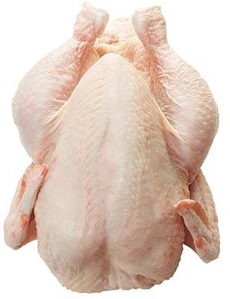TIP OF THE DAY: Debunking Myths About Bacteria & Food Safety
|
|
Whether you heat, nuke, zap or other favorite word, using a microwave oven to cook or reheat foods is fast and convenient.
But it’s not effective at killing harmful bacteria if the food isn’t heated to a safe internal temperature, according to the Partnership for Food Safety Education, a non-profit group. The misconception that the microwaved kill bacteria is one of their four featured food safety myths for 2012. September is National Food Safety Education Month. The Partnership, in cooperation with the U.S. Department of Agriculture, the U.S. Food and Drug Administration and a network of retailers across the U.S., has launched its annual Home Food Safety Mythbusters. See how many of the four safety myths you believe. |
|
|
About one in six Americans—48 million people—will get a foodborne illness this year, according to Centers for Disease Control and Prevention estimates. The Partnership launched Mythbusters in 2009 to address common food safety myths and to give consumers actionable steps they can follow to protect themselves and their families from food poisoning. The last mythbuster was the that was news for us, and good news at that! MYTH: “If I microwave food, the microwaves kill the bacteria, so the food is safe.” FACT: Microwaving itself isn’t what kills bacteria in food: It’s the amount of heat generated by the microwaves. Microwaved foods can cook unevenly because they may be shaped irregularly or vary in thickness. Even microwave ovens with a turntable can cook unevenly and leave cold spots in food, where harmful bacteria can survive. WHAT TO DO: Be sure to follow package instructions and rotate and stir foods during the cooking process, if the instructions call for it. Observe any standing times specified in the directions: the heat from standing time may be needed to kill the bacteria. For foods that can harbor harmful bacteria, such as meat and poultry, check the temperature of microwaved foods with a food thermometer in several spots. |
||
|
MYTH: “I wash all bagged lettuce and greens because it might make me sick if I don’t.” FACT: While it is important to thoroughly wash most fresh fruits and vegetables, if packaged greens are labeled “ready-to-eat,” “washed” or “triple washed,” then the product does NOT need to be washed again at home. Pre-washed greens have been through a cleaning process immediately before going into the bag. Re-washing and handling the greens at home actually creates opportunities for contamination. WHAT TO DO: Don’t rewash greens that have been washed already, and always handle pre-washed greens with clean hands. Make sure that cutting boards, utensils and counter tops are clean. MYTH: “I don’t need to use a food thermometer. I can tell when my food is cooked by looking at it or checking the temperature with my finger.” FACT: The only sure way to know food is safely cooked is to check the temperature with a food thermometer and confirm it has reached a safe internal temperature. |
 You can refreeze chicken and other proteins if they have been thawed in the fridge. Photo courtesy 21Food.com. |
|
|
Color, texture and steam are not indicators that a food is safe to eat. The surface of a food might be steaming hot, but there may be cold spots inside. WHAT TO DO: Keep a food thermometer on top of the microwave; this slender thermometer is unobtrusive. Clean the food thermometer with soap and water after each use. MYTH: “I can’t re-freeze foods after I have thawed them: I have to cook them or throw them away.” FACT: If raw proteins such as meat, poultry, egg products and seafood have been thawed in the refrigerator, then they can be safely re-frozen without cooking. Never thaw raw foods by letting them sit on the kitchen counter; the warmth of the room enables harmful bacteria to multiply quickly. WHAT TO DO: Only re-freeze raw or partially cooked foods that have been thawed in the fridge. If raw foods are thawed outside of the refrigerator—for example, in the microwave or in cool water—they need to be cooked immediately. Mythbusters educational materials, including a PowerPoint Presentation, a teachers’ kit, games for children and more, are all available as free downloads at Fightbac.org. You’ll also find the four tips from 2009 through 2011. |
||



